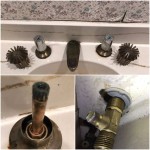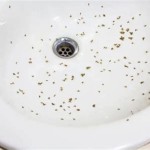Is Vinyl Flooring Bad for Bathrooms? A Comprehensive Examination
Vinyl flooring has become a prevalent choice for bathroom renovations and new construction projects. Its water resistance, affordability, and variety of styles make it an attractive option for homeowners and contractors alike. However, the question of whether vinyl flooring is truly a suitable choice for bathrooms warrants a thorough examination. This article will explore the potential drawbacks and advantages of using vinyl flooring in bathrooms, addressing common concerns and providing a balanced perspective to inform decision-making.
The bathroom environment presents unique challenges for flooring materials. High humidity, frequent water exposure from showers and baths, and potential spills from sinks and toilets can all contribute to damage and degradation over time. Therefore, selecting a flooring material that can withstand these conditions is crucial to prevent costly repairs and maintain a healthy indoor environment.
Vinyl flooring encompasses several types, including sheet vinyl, vinyl tile, and luxury vinyl plank (LVP) or tile (LVT). Each type possesses slightly different characteristics that can influence its suitability for bathroom applications. Sheet vinyl, for instance, is installed in large, continuous pieces, minimizing seams and reducing the risk of water penetration. LVP and LVT, on the other hand, are installed as individual planks or tiles, which can offer more design flexibility but also create more seams that require proper sealing.
While vinyl flooring is often touted for its water resistance, it is important to distinguish between water resistance and waterproofness. Most vinyl flooring products are water-resistant, meaning they can withstand splashes and spills for a certain period. However, prolonged exposure to standing water can lead to moisture seeping through seams or imperfections in the flooring. This can result in mold growth, subfloor damage, and unpleasant odors. Therefore, proper installation and maintenance are essential to mitigate these risks.
Furthermore, the quality of the vinyl flooring itself plays a significant role in its performance in a bathroom setting. Cheaper vinyl products may be more susceptible to scratches, dents, and fading, which can compromise their appearance and water resistance over time. Investing in higher-quality vinyl flooring can provide greater durability and longevity, making it a more cost-effective option in the long run.
Potential Drawbacks of Vinyl Flooring in Bathrooms
Despite its advantages, vinyl flooring is not without potential drawbacks when used in bathrooms. These drawbacks primarily stem from issues related to moisture management, installation quality, and susceptibility to damage.
One major concern is the potential for water to seep beneath the vinyl flooring, particularly at seams and around fixtures. This can occur if the flooring is not properly installed or if the seams are not adequately sealed. Once water penetrates beneath the vinyl, it can create a breeding ground for mold and mildew, which can pose health risks and generate unpleasant odors. Additionally, prolonged moisture exposure can damage the subfloor, leading to structural problems and requiring costly repairs. To mitigate this risk, it is crucial to ensure that the vinyl flooring is installed by a qualified professional who can properly seal the seams and edges.
Another drawback is the potential for vinyl flooring to become slippery when wet. This can be a particular concern in bathrooms, where spills and splashes are common. While some vinyl flooring products are designed with textured surfaces to improve slip resistance, it is important to carefully consider this factor when selecting a product for a bathroom. Adding rugs and mats in high-traffic areas can also help to reduce the risk of slips and falls.
Furthermore, vinyl flooring can be susceptible to damage from sharp objects and heavy impacts. While it is generally durable, dropping a heavy object or dragging furniture across the floor can cause dents, scratches, and tears. These imperfections can not only detract from the appearance of the flooring but also compromise its water resistance. To prevent damage, it is important to exercise caution when handling sharp objects and furniture in the bathroom.
Advantages of Vinyl Flooring in Bathrooms
Conversely, vinyl flooring offers several compelling advantages that make it a popular choice for bathrooms. These advantages include its water resistance, affordability, ease of maintenance, and wide range of design options.
One of the primary benefits of vinyl flooring is its inherent water resistance. Unlike hardwood or laminate flooring, vinyl is impervious to water and can withstand splashes and spills without significant damage. This makes it an ideal choice for bathrooms, where moisture exposure is a constant concern. However, as previously mentioned, it is important to ensure that the flooring is properly installed and sealed to prevent water from seeping beneath the surface.
Another advantage of vinyl flooring is its affordability. Compared to other flooring options such as tile or stone, vinyl is generally less expensive, making it an attractive choice for budget-conscious homeowners. This affordability extends to both the material cost and the installation cost, as vinyl flooring is relatively easy to install, which can reduce labor expenses.
Furthermore, vinyl flooring is known for its ease of maintenance. It is generally resistant to stains and spills and can be easily cleaned with a damp mop and mild detergent. This makes it a practical choice for busy households where time and effort are valuable resources. Additionally, vinyl flooring does not require any special sealing or waxing, which further simplifies the maintenance process.
Finally, vinyl flooring offers a wide range of design options. It is available in a variety of colors, patterns, and textures, allowing homeowners to create a custom look that complements their bathroom décor. Vinyl flooring can mimic the appearance of natural materials such as wood, stone, and tile, providing a cost-effective way to achieve a high-end aesthetic. This versatility makes it a popular choice for both traditional and modern bathrooms.
Installation and Maintenance Considerations
The success of vinyl flooring in a bathroom ultimately depends on proper installation and ongoing maintenance. Even the highest-quality vinyl flooring can fail if it is not installed correctly or if it is neglected over time.
Prior to installation, it is crucial to ensure that the subfloor is clean, level, and dry. Any imperfections in the subfloor can telegraph through the vinyl flooring, creating an uneven surface and potentially compromising its water resistance. If the subfloor is damaged or uneven, it may need to be repaired or replaced before installing the vinyl flooring.
During installation, it is essential to follow the manufacturer's instructions carefully. This includes using the correct adhesive, properly aligning the seams, and ensuring that the edges are securely sealed. For sheet vinyl, it is important to create a seamless installation to prevent water from penetrating beneath the flooring. For LVP and LVT, it is crucial to ensure that the planks or tiles are tightly interlocked and that the seams are properly sealed with a waterproof sealant.
After installation, regular cleaning and maintenance are essential to prolong the life of the vinyl flooring. This includes sweeping or vacuuming regularly to remove dirt and debris, and mopping with a damp mop and mild detergent as needed. Avoid using abrasive cleaners or harsh chemicals, as these can damage the surface of the vinyl flooring. Additionally, it is important to promptly clean up any spills or splashes to prevent staining or water damage.
Periodically, it may be necessary to re-seal the seams of LVP and LVT flooring to maintain its water resistance. This is particularly important in areas that are frequently exposed to water, such as around the shower or bathtub. Inspecting the flooring regularly for any signs of damage, such as cracks, dents, or tears, can also help to prevent problems from escalating.
Choosing the right underlayment is also important. A quality underlayment provides cushioning, sound insulation, and moisture protection. Some underlayments are specifically designed for use in bathrooms and offer enhanced water resistance. Selecting an appropriate underlayment can significantly improve the performance and longevity of the vinyl flooring.
In conclusion, while vinyl flooring can be a suitable and practical option for bathrooms, its performance depends on careful consideration of factors such as the type of vinyl, quality of installation, and ongoing maintenance. Addressing potential drawbacks and maximizing its advantages can ensure a durable, attractive, and water-resistant flooring solution for the bathroom.

What Is The Best Flooring For Bathrooms Tarkett

The Pros Cons Of Bathroom Flooring Options Carpet Court

Vinyl Planks In Bathrooms Residential Inspiration Flooring

Best Flooring Options For Bathrooms Word Of Mouth Floors

Can You Renovate Bathrooms With Vinyl Flooring Imagine Floors

How To Lay Vinyl Floor In A Bathroom Dove Cottage

The Pros Cons Of Bathroom Flooring Options Carpet Court

Choosing Vinyl For Your Bathroom Tarkett

7 Benefits Of Bathroom Vinyl Flooring Victorian Plumbing

5 Pros And Cons For Installing Vinyl Flooring In Bathroom
Related Posts







